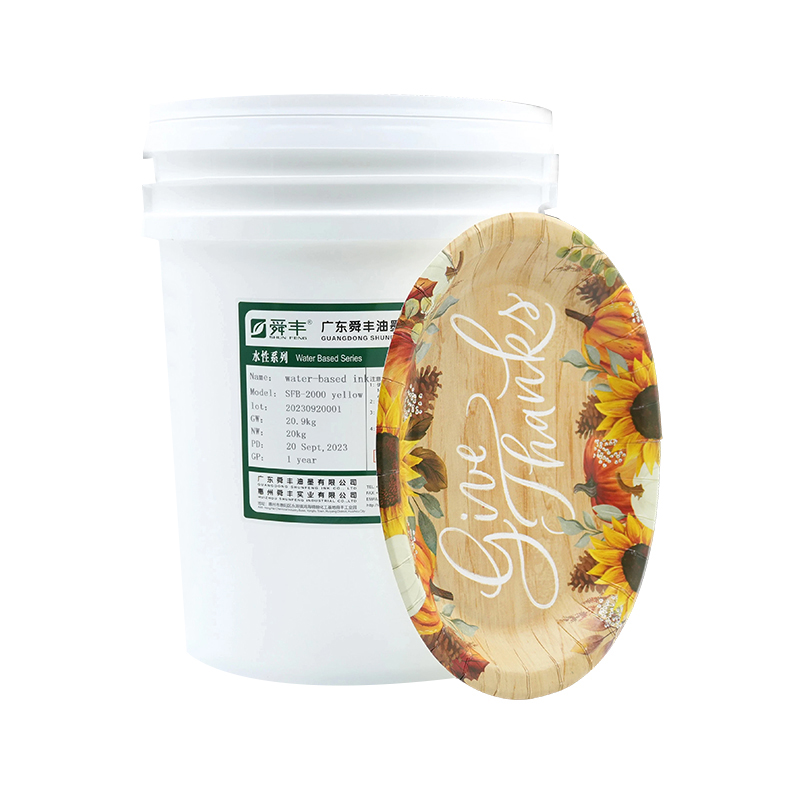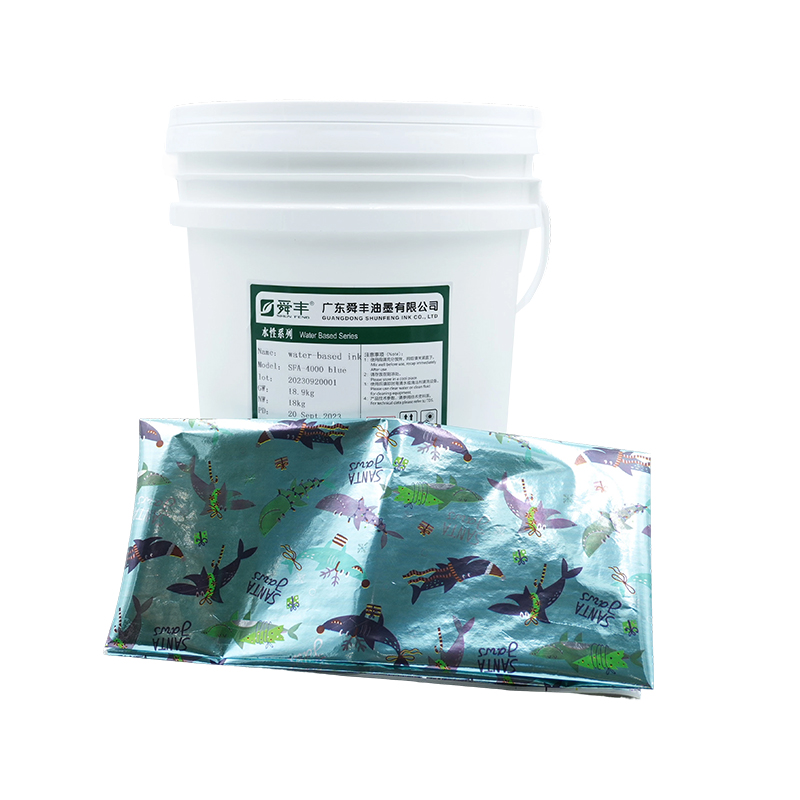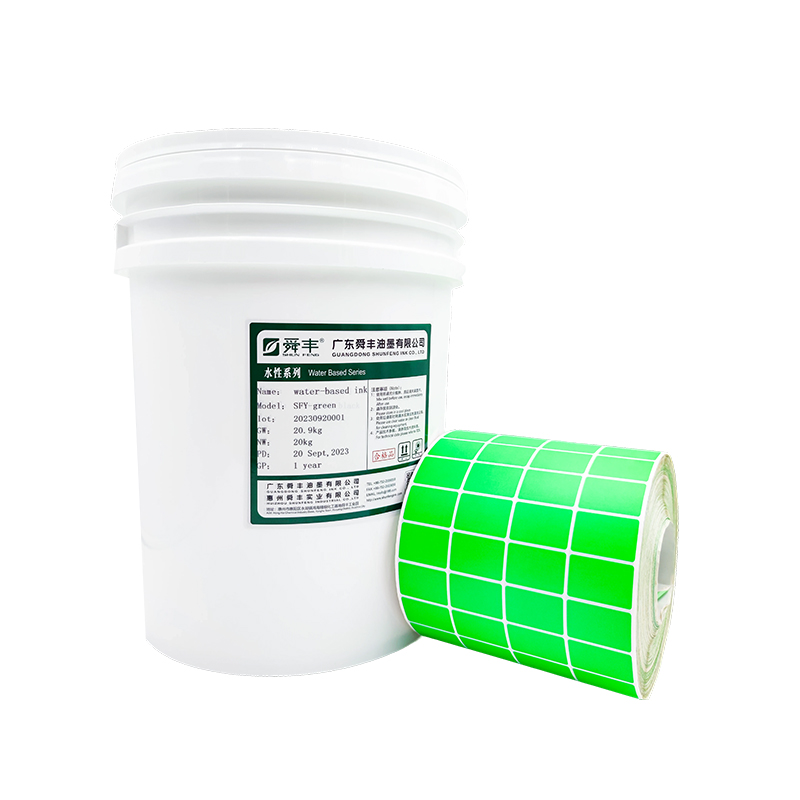How can the scratch resistance of flexo water-based ink for tableware be improved through formula optimization?
Release Time : 2025-04-17
In the field of tableware flexo printing, flexo water-based ink for tableware has gradually become the mainstream due to its environmentally friendly characteristics, but insufficient scratch resistance may cause pattern wear and ink shedding, affecting the beauty and safety of tableware. By optimizing the formula, the scratch resistance of flexo water-based ink for tableware can be improved from the essence of the material to meet the market demand for high-quality tableware printing.
Resin is the key substance for the film formation of flexo water-based ink for tableware. Choosing a suitable resin system is crucial to improving the scratch resistance. Polyurethane acrylate (PUA) resin has excellent flexibility and wear resistance. Its molecular chain contains carbamate and acrylate groups. After film formation, it forms a tough cross-linked network structure that can effectively resist external scratches. In addition, epoxy resin-modified water-based resins are also popular. The epoxy groups in epoxy resin undergo a ring-opening reaction during the curing process to form a three-dimensional network structure, which enhances the hardness and cohesion of the ink film, making the ink film less likely to break when scratched. Compounding resins with different characteristics, taking advantage of their strengths and making up for their weaknesses, can further optimize the comprehensive performance of the ink film, while ensuring flexibility and improving scratch resistance.
Functional additives play an important role in improving the scratch resistance of flexo water-based ink for tableware. Inorganic fillers such as nano-silica and alumina are dispersed in the ink system, which can fill the microscopic pores of the ink film, increase the hardness and roughness of the ink film surface, and thus improve its scratch resistance. These nano-scale fillers can also act as a physical barrier, dispersing the stress during scratching and preventing the ink film from being easily scratched. At the same time, adding wear-resistant additives such as silicone elastomers, whose molecular structure can form a lubricating layer on the surface of the ink film, reduce the surface friction coefficient, reduce the friction between external objects and the ink film, and make the ink film less likely to be worn when scratched. However, the amount of additives added must be strictly controlled. Excessive addition may lead to problems such as poor ink fluidity and slow drying speed, affecting printing suitability.
Cross-linking reaction can enhance the cohesion and strength of the ink film, which is an important way to improve scratch resistance. Selecting a suitable crosslinking agent, such as aziridine and carbodiimide crosslinking agents, can react with the active groups in the water-based resin to form a covalent crosslinking network inside the ink film. This crosslinking network limits the relative movement of the molecular chains, making the ink film denser and tougher, thereby improving its scratch resistance. In addition, optimizing the curing system is also crucial. For flexo water-based ink for tableware containing light-curing ingredients, adjust the type and amount of photoinitiator to ensure that it can be quickly and fully cured after printing to form a complete and dense ink film structure, effectively improving the scratch resistance.
The rheological properties of the ink affect its transfer and drying film-forming effects during the printing process, which in turn is related to the scratch resistance of the ink film. The viscosity and thixotropy of the ink can be adjusted by adding rheological property modifiers, such as thickeners and thixotropic agents. Appropriate viscosity can ensure that the ink is evenly transferred during the printing process and avoid uneven ink film thickness. Good thixotropy reduces the viscosity of the ink when it is subjected to shear force, which is convenient for printing. After the shear force disappears, the viscosity recovers quickly to prevent the ink from sagging and ensure the formation of a flat and uniform ink film. A flat and dense ink film structure is conducive to improving its overall strength and scratch resistance, and reducing the risk of scratch damage caused by ink film defects.
The uniform dispersion of each component in the formula is the basis for ensuring the performance of the ink. Use efficient dispersion processes, such as sand milling and ball milling, to ensure that the resin, filler, additives, etc. are fully dispersed in the aqueous system to avoid agglomeration. Agglomerated particles will not only affect the flatness of the ink film, but also reduce the cohesive force of the ink film, making the ink film easy to break when scratched. At the same time, improving the storage stability of the ink cannot be ignored. By adding appropriate preservatives, pH adjusters, etc., the ink can be prevented from deteriorating and stratifying during storage, ensuring that the ink performance is stable during printing, and finally forming a scratch-resistant ink film with good performance.
The scratch resistance of flexo water-based ink for tableware can be significantly improved by selecting high-performance resin systems, adding functional additives in a reasonable manner, optimizing crosslinking agents and curing systems, using rheological property modifiers, and improving dispersion processes and stability. In actual production, it is necessary to comprehensively adjust the formula according to different printing requirements and tableware materials to achieve a balance between the ink's scratch resistance and other properties, and promote the advancement and development of flexo water-based ink for tableware technology.







